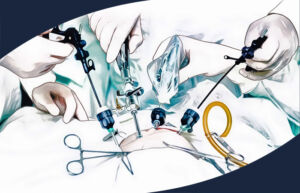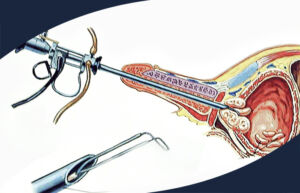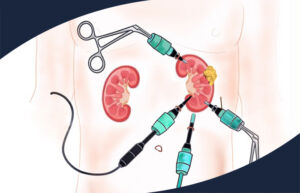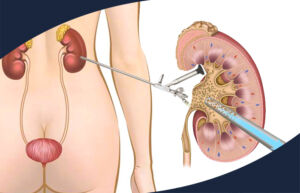UROLOGY IZMIR
Prof. Dr. Ömer DEMİR
FREQUENTLY ASKED QUESTIONS ABOUT UROLOGY
Laparoscopic surgery is performed with 3-4 1 cm entrance incisions from the abdomen. In the field of urology, it can be applied in cancer surgeries, especially in kidney and adrenal gland surgery. Laparoscopic surgery in kidney tumors has similar success with classical open surgery techniques in terms of cancer control. The most important advantage of laparoscopic surgery is that it allows faster recovery after surgery and a less painful period.
Urology is a science of surgical medicine dealing with the urinary tract and organs of men and women and the structure and diseases of male reproductive organs. In addition, surgical treatment of the adrenal glands is included in the field of urology. Urology department deals with the diagnosis and treatment of the organs of the urinary system in men and women such as kidney, urinary tract (ureter) and bladder, and cancers originating from the adrenal gland. It also deals with the diagnosis and treatment of cancers caused by the prostate, penis and testicles in men. Cancers that fall into the field of urology department are kidney cancers, urinary tract (renal pelvis, ureter) cancers, bladder cancer , adrenal gland cancers, prostate cancer , testicular cancer, penile cancer
Operations for prostate diseases are divided into two main categories.
Benign prostate enlargement and prostate cancer.
Surgical treatment for benign prostate enlargement is generally known as minimally invasive prostate surgery. The goal of prostate surgery is to relieve the obstruction by cleaning the prostate tissue that presses the urinary tract by entering through the urinary tract and causing urination problems.
Techniques;
TURP- Transurethral Prostate Resection (Monopolar / Bipolar / Plasma kinetic) surgery is the standard minimally invasive prostate surgery method that has been applied for about 50 years, and it is performed more safely than in previous years with the newly developed plasmakinetic technology.
HoLEP (Prostate Enucleation with Holmium Laser) Here, it is the method of removing the prostate tissue from the surrounding membrane with the help of a laser.
Evaporation of the Prostate: The aim of this method is to vaporise the prostate tissues using laser energy. In surgical treatment for prostate cancer, the main goal is to remove the cancerous prostate tissue with the membrane surrounding it, called the capsule. Prostate surgery for cancer can be performed with open, laparoscopic or robotic techniques. Although there is no significant difference between cancer treatment success and long-term postoperative erection and urinary incontinence problems, laparoscopic and robotic methods have some advantages in terms of bleeding and postoperative pain.
Kidney stones are hard deposits of minerals and salts that form inside the urine collection structures of the kidneys. Kidney stones occur when there is a decrease in the amount of urine, the shortage of substances that prevent stone formation, or when there are excessive stone-forming substances in the urine. The low amount of urine due to not consuming enough water or fluid is the most important risk factor for kidney stone formation. It is known that factors such as not drinking enough fluids during the day, genetic factors, family history, age, gender, race, low activity or inactivity and diet increase the risk of stone formation. It is known that the frequency of kidney and urinary tract stones increases in the following cases: 1. Structural disorders in the kidneys and / or urinary tract – horseshoe kidney, ureteral stenosis 2. Family history of kidney stones 3. Hypertension and diabetes 4. Hyperparathyroidism 5. Obesity and sedentary lifestyle. 6. Lack of fluid intake 7. Citrate deficiency in urine 8. Some congenital metabolic diseases called cystinuria 9. Medications (overdose of calcium and vitamin D supplements) 10. More common in hot climates
The adrenal glands are hormone-producing organs. These hormones play a role in controlling blood pressure, chemical levels in the blood, water use in the body, glucose utilisation, and reaction during times of stress. These adrenal hormones include cortisol, aldosterone, adrenaline hormones – epinephrine and norepinephrine – and a small portion of the body’s sex hormones (oestrogen and androgens).
The most common reason why a patient’s adrenal gland needs to be removed is due to excess hormone production by a tumor located within the gland. They are generally known as benign growths that can be removed with laparoscopic techniques. In rare cases, growths in the adrenal gland are caused by cancer.
What are the Advantages of Laparoscopic Adrenalectomy?
Today, removal of the adrenal gland (also known as “laparoscopic adrenalectomy”) with a technique known as minimally invasive surgery can be performed through three or four 1 centimeter incisions. Patients have less pain due to surgery, they can return to work more quickly than patients recovering from open surgery after leaving the hospital within a day or two.




